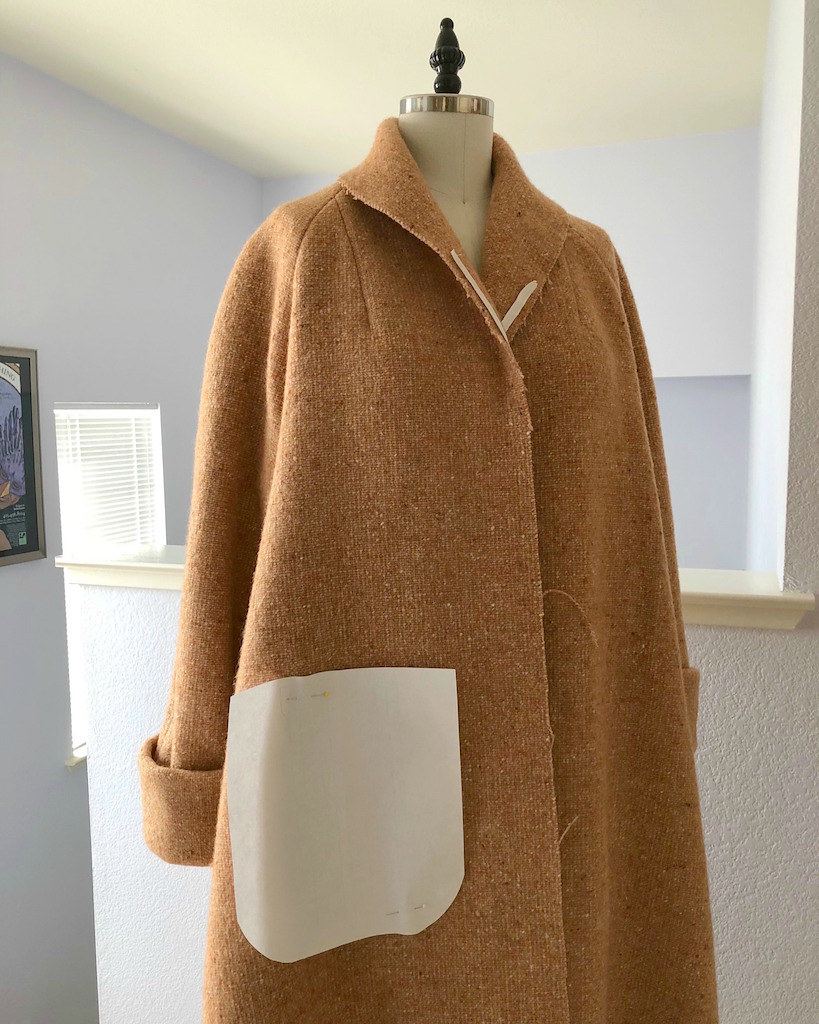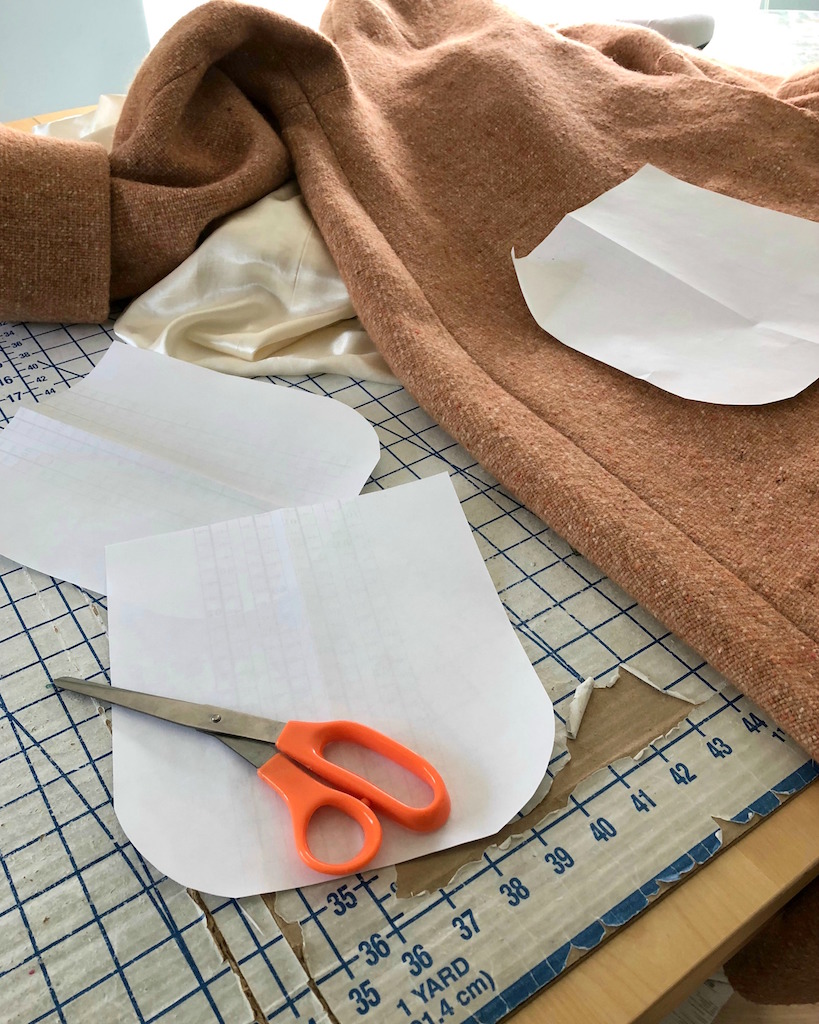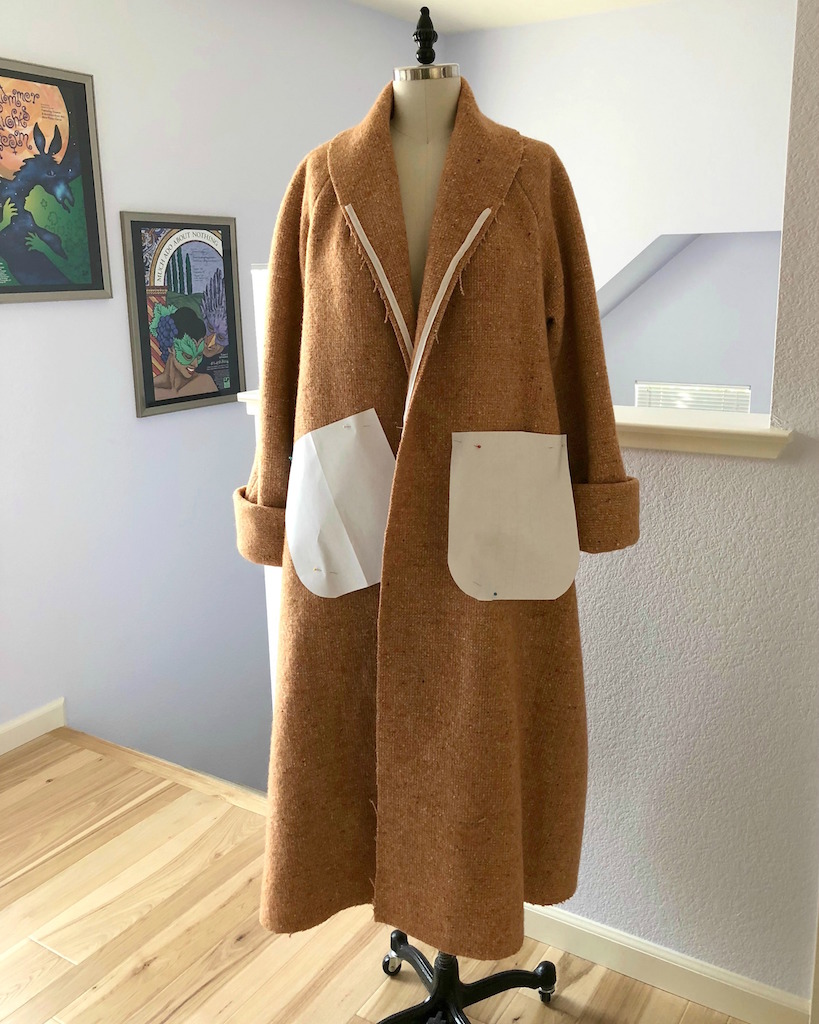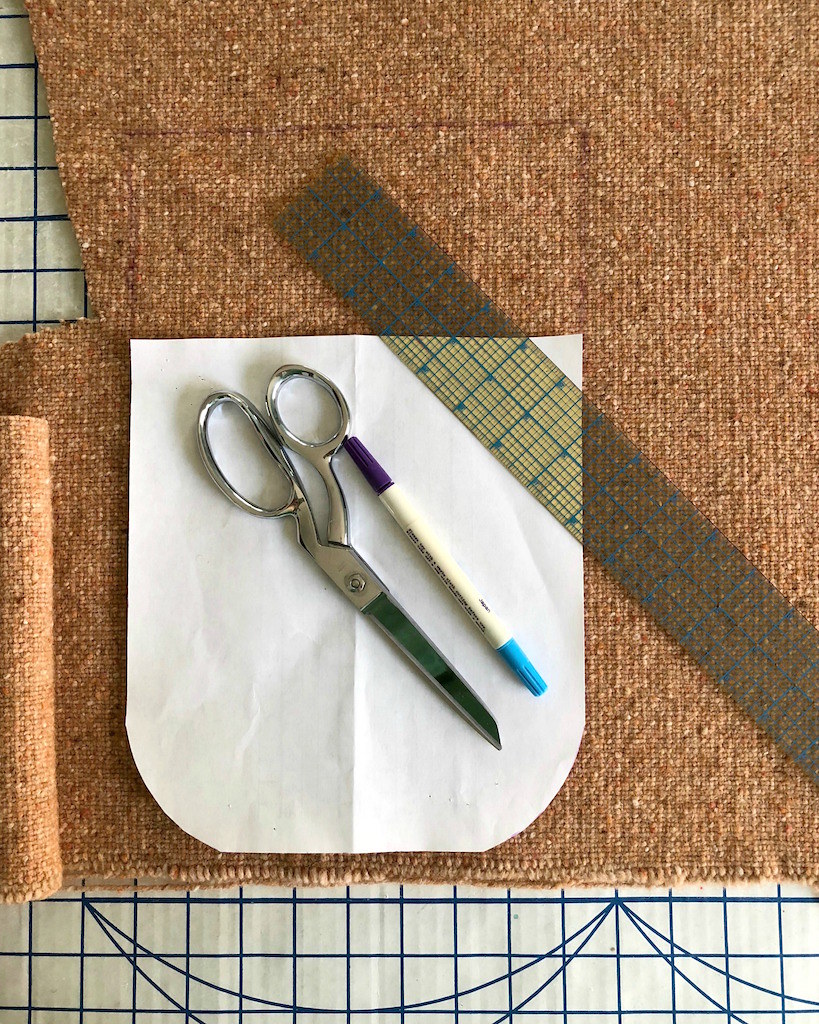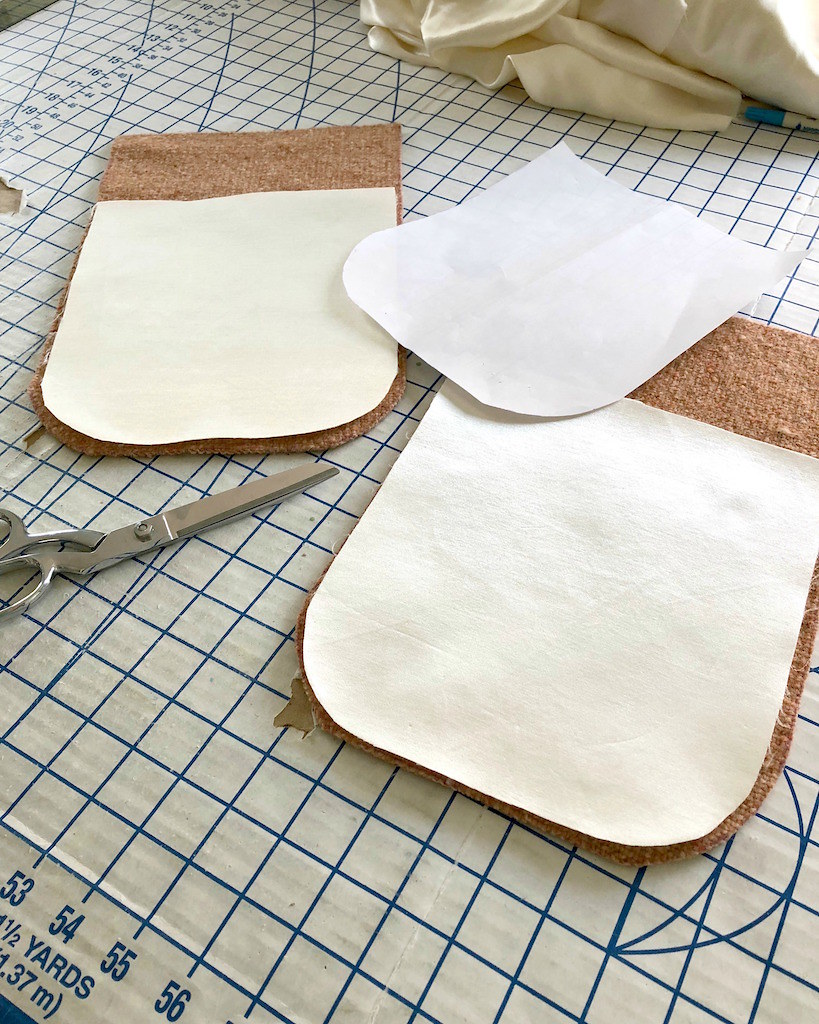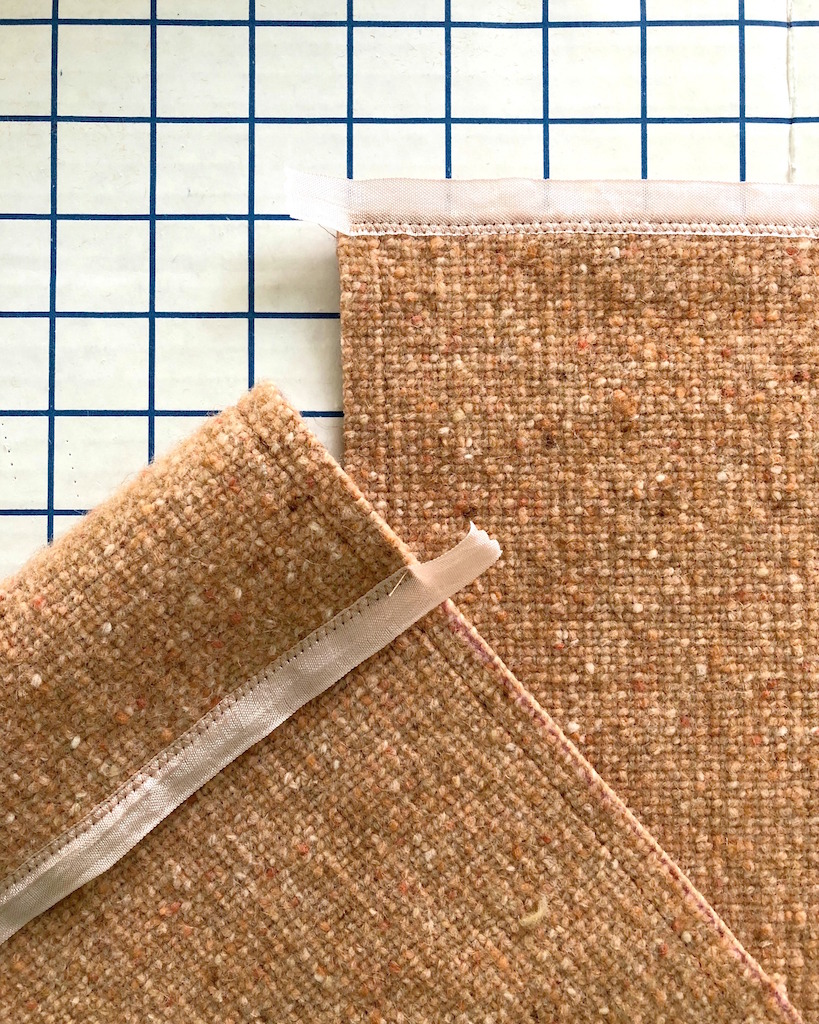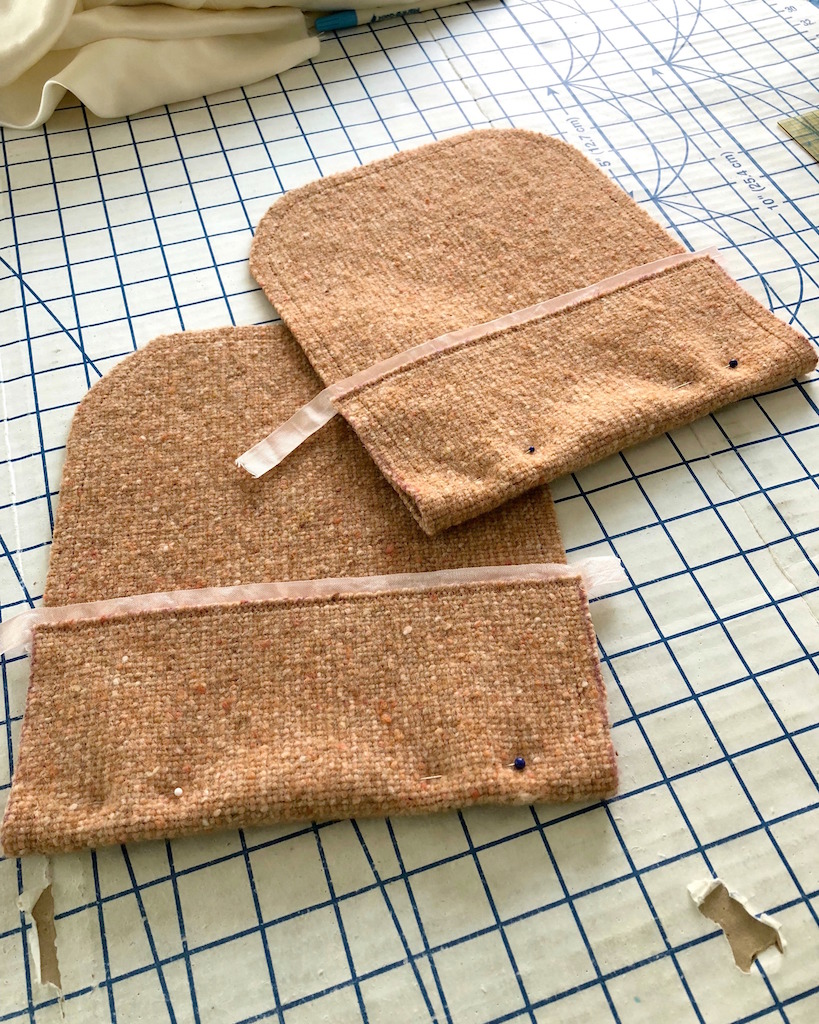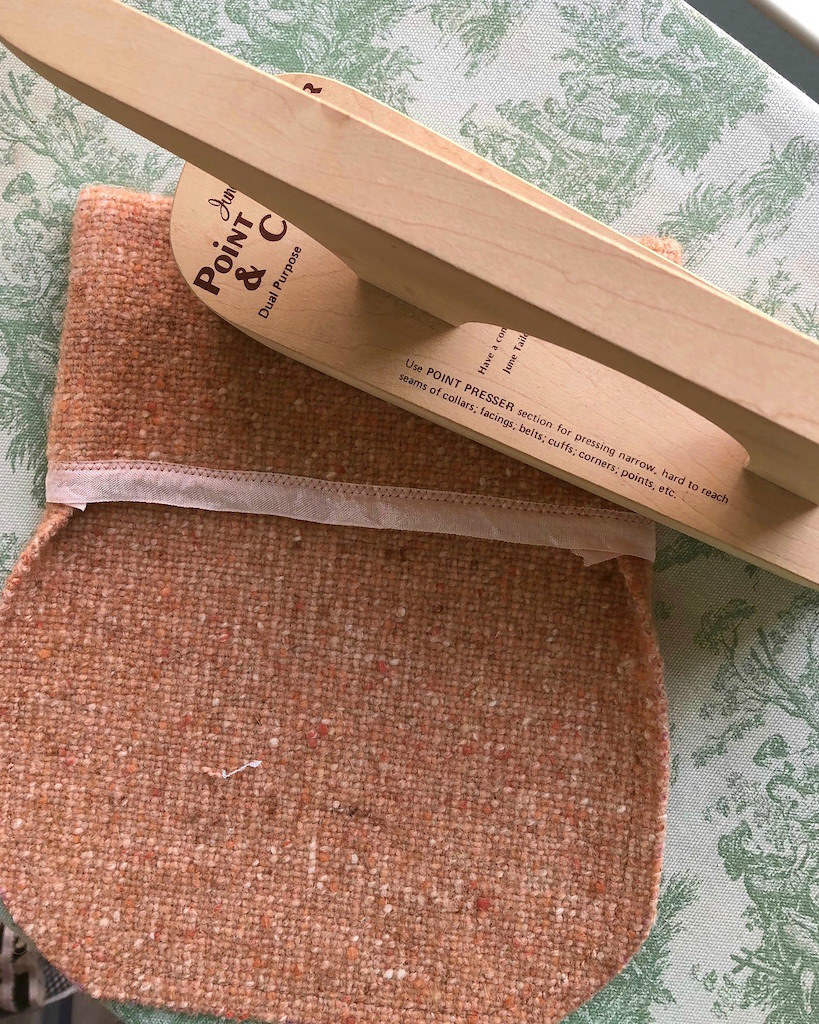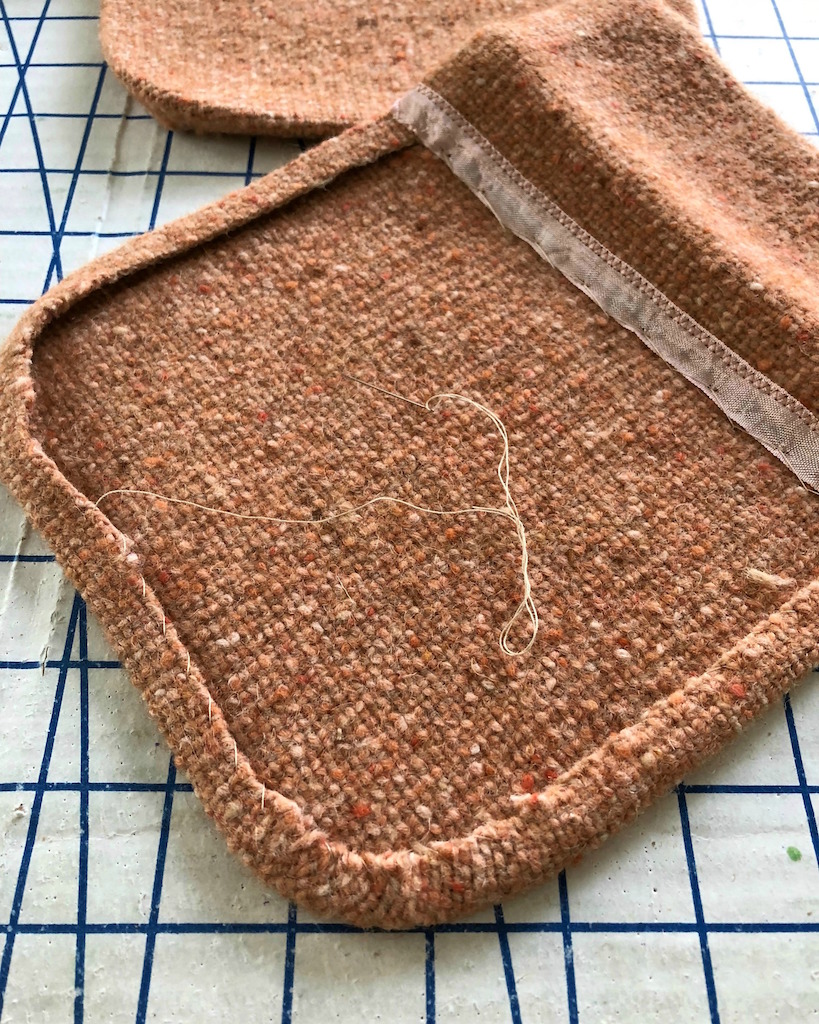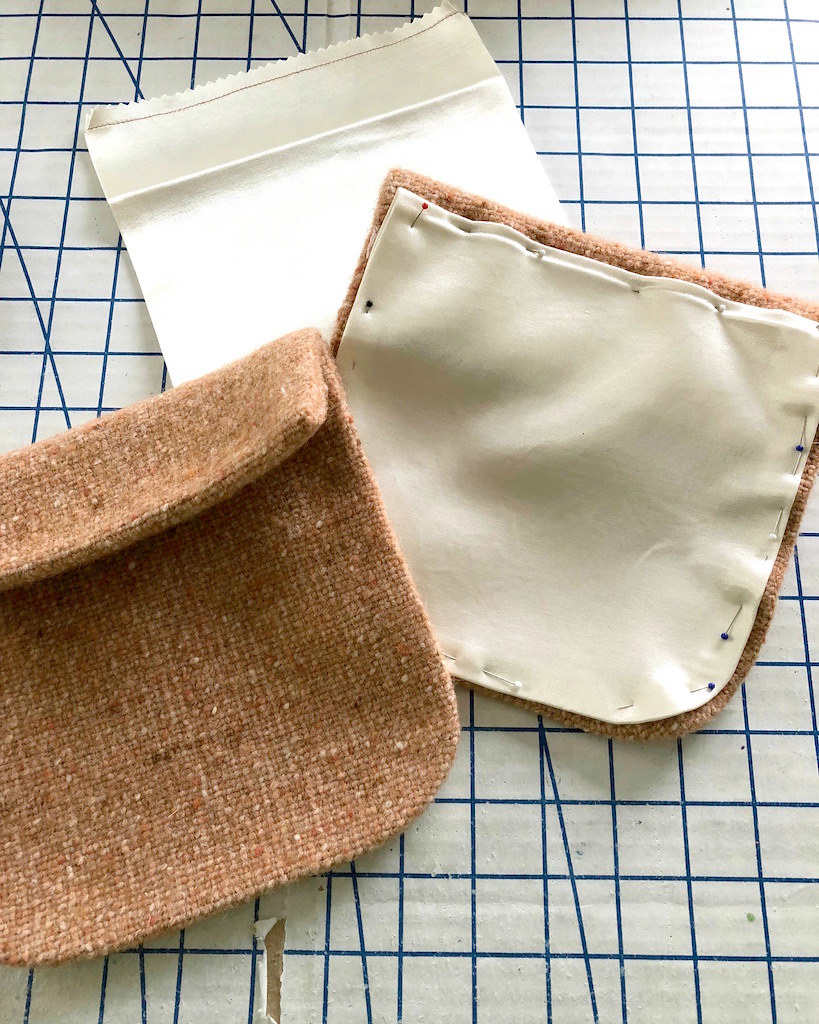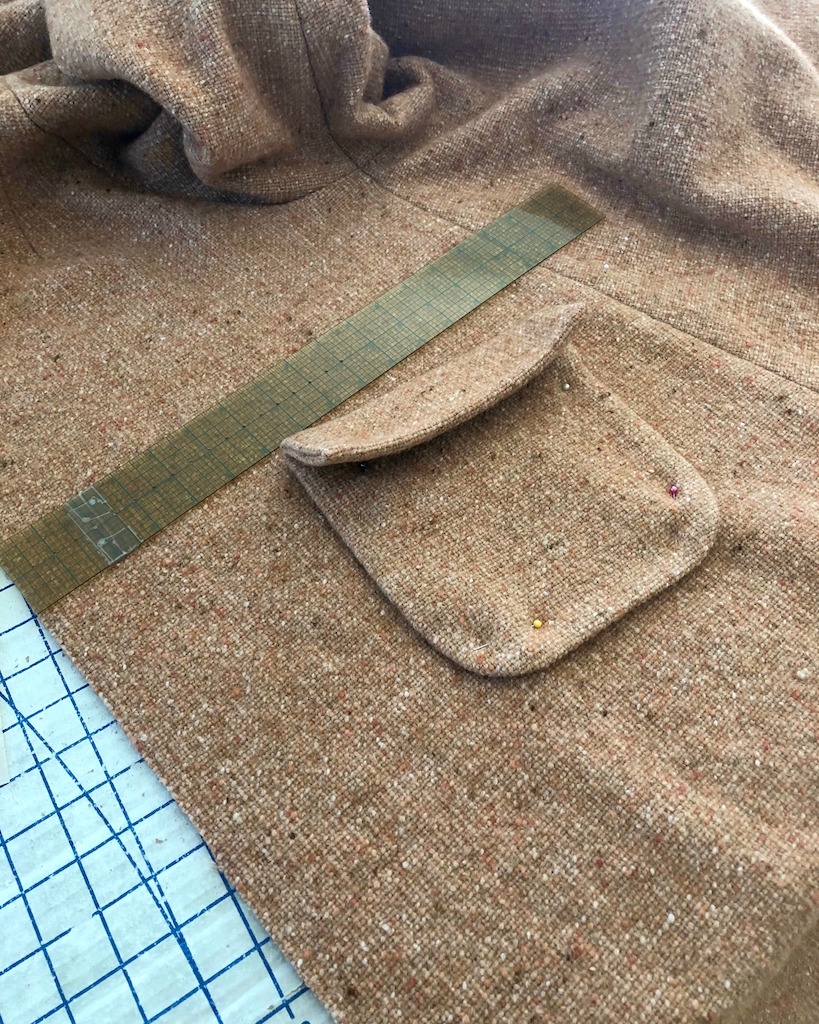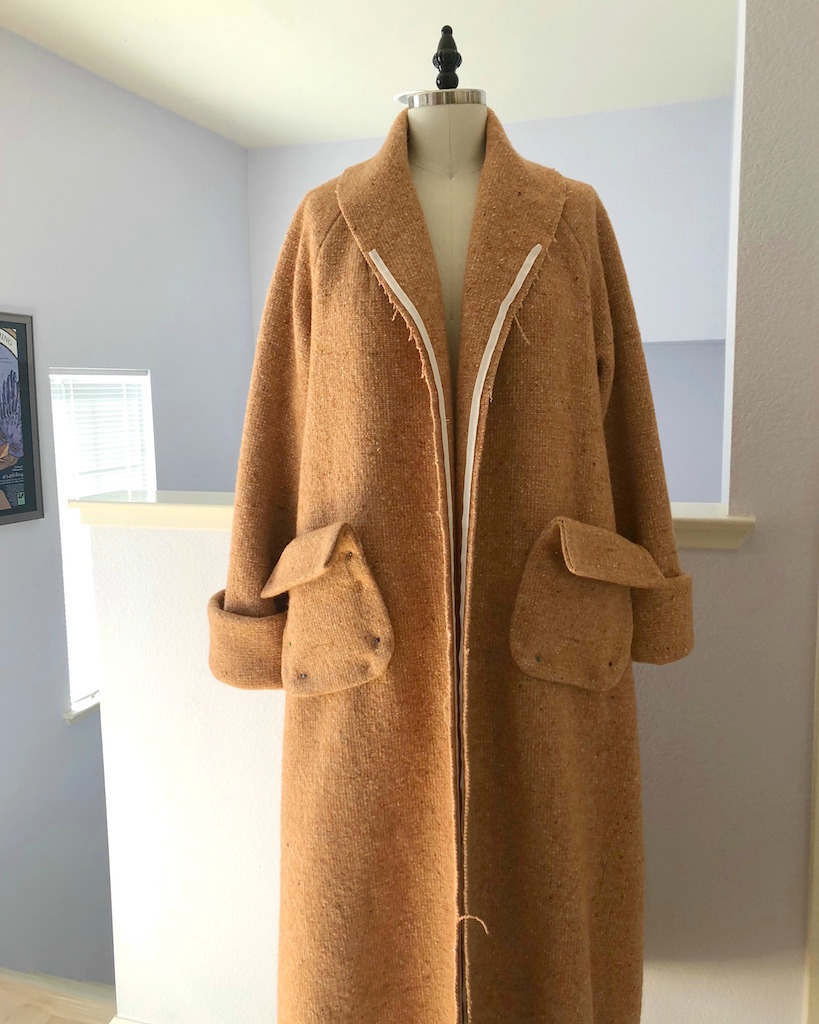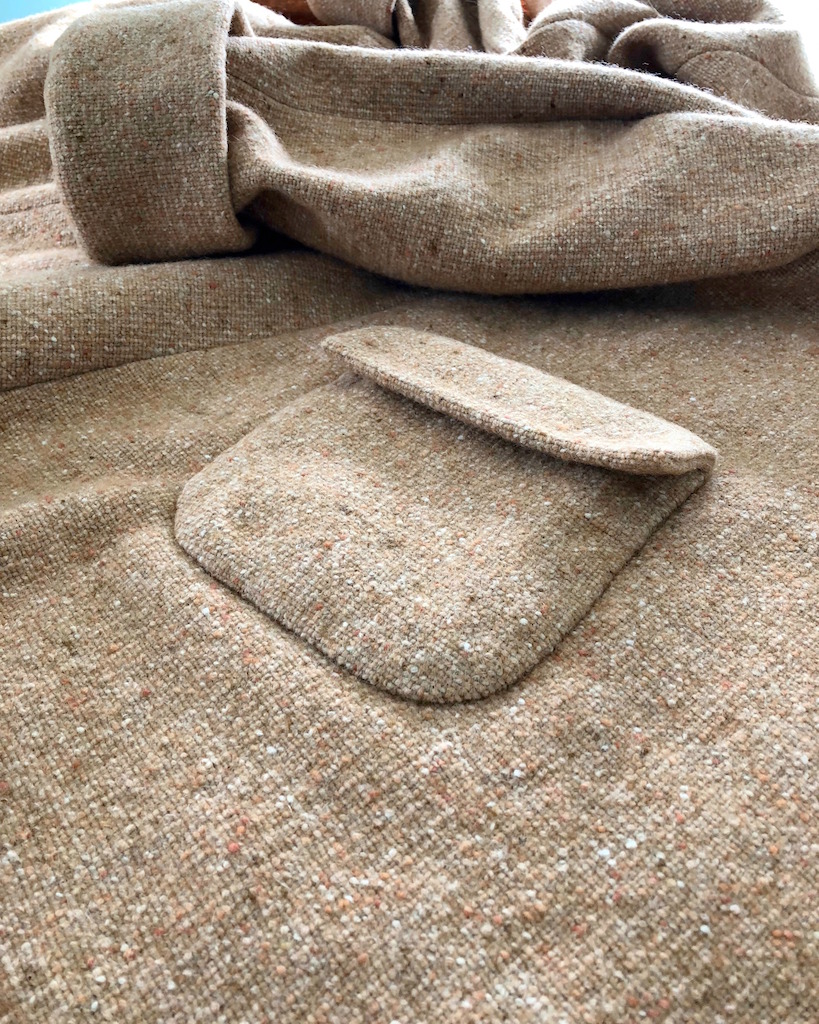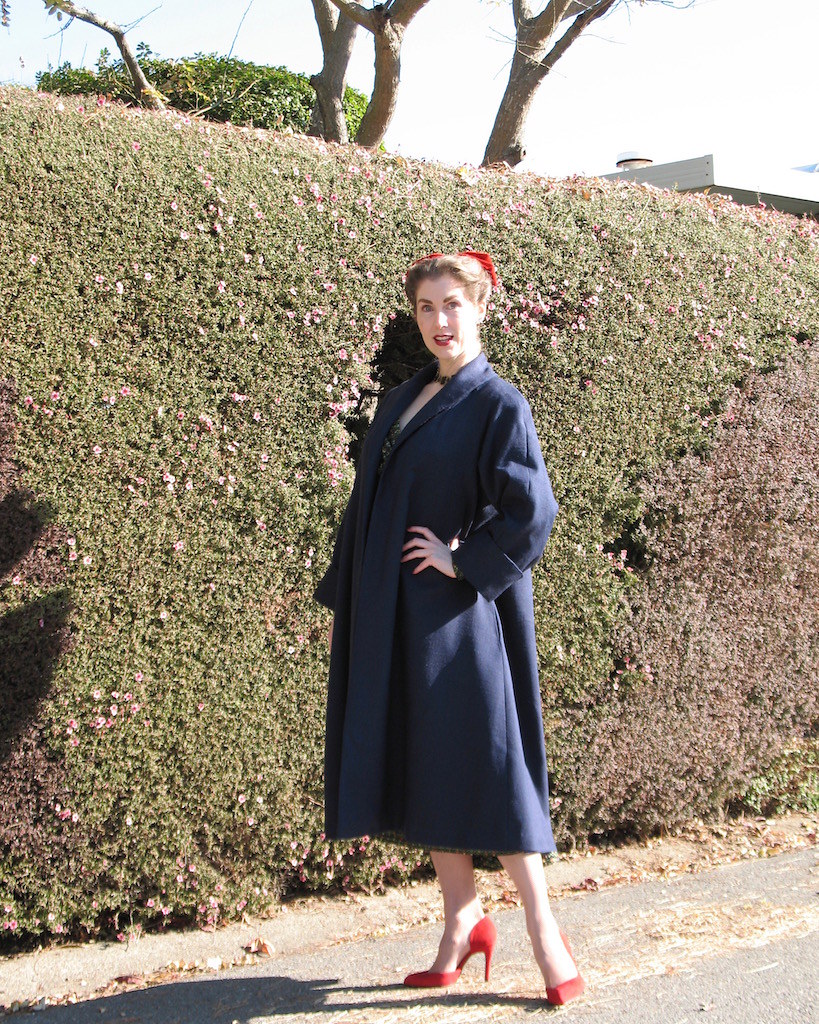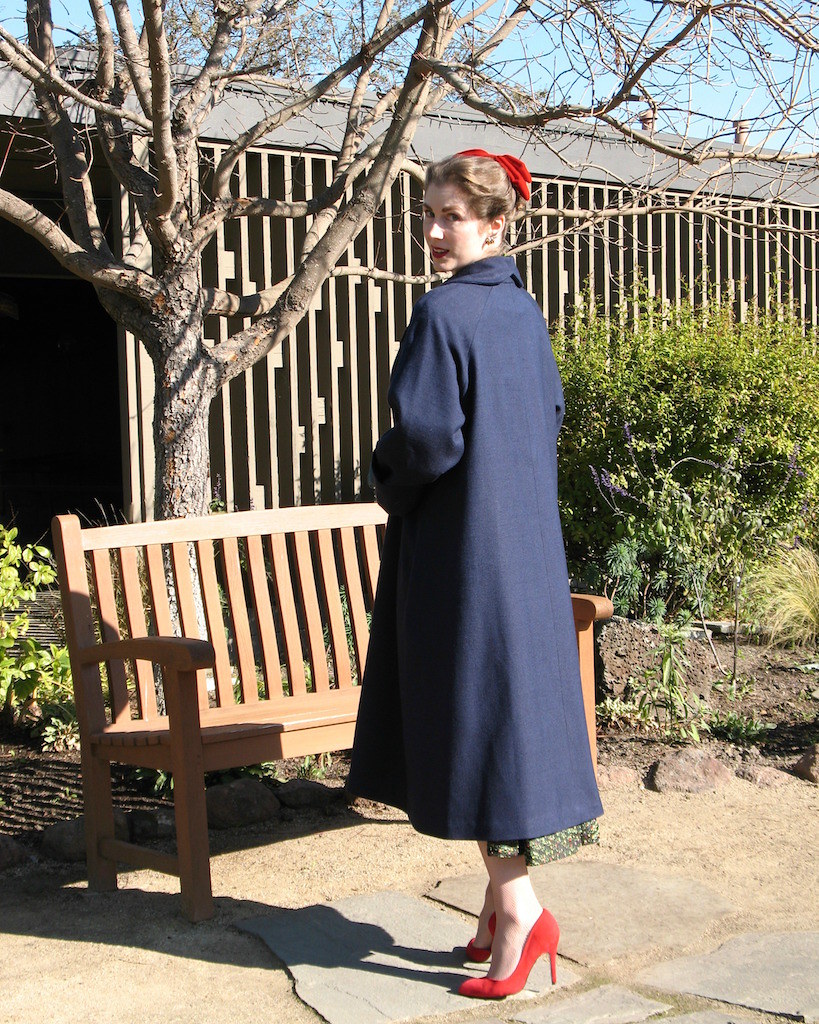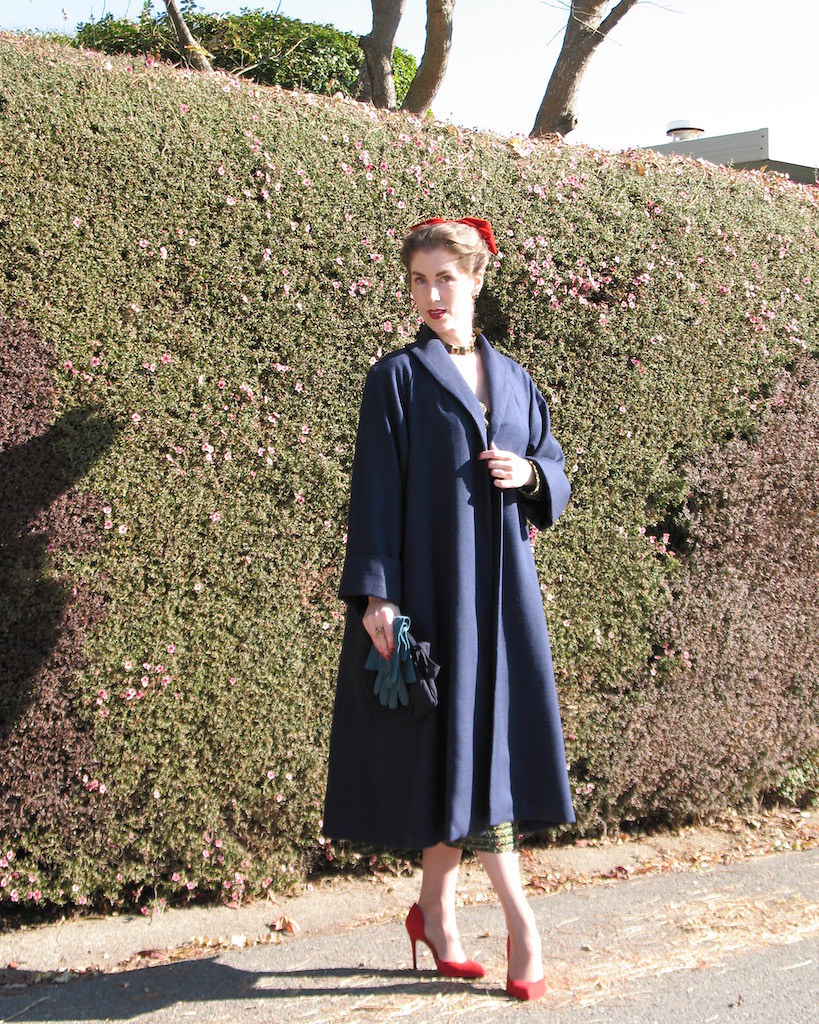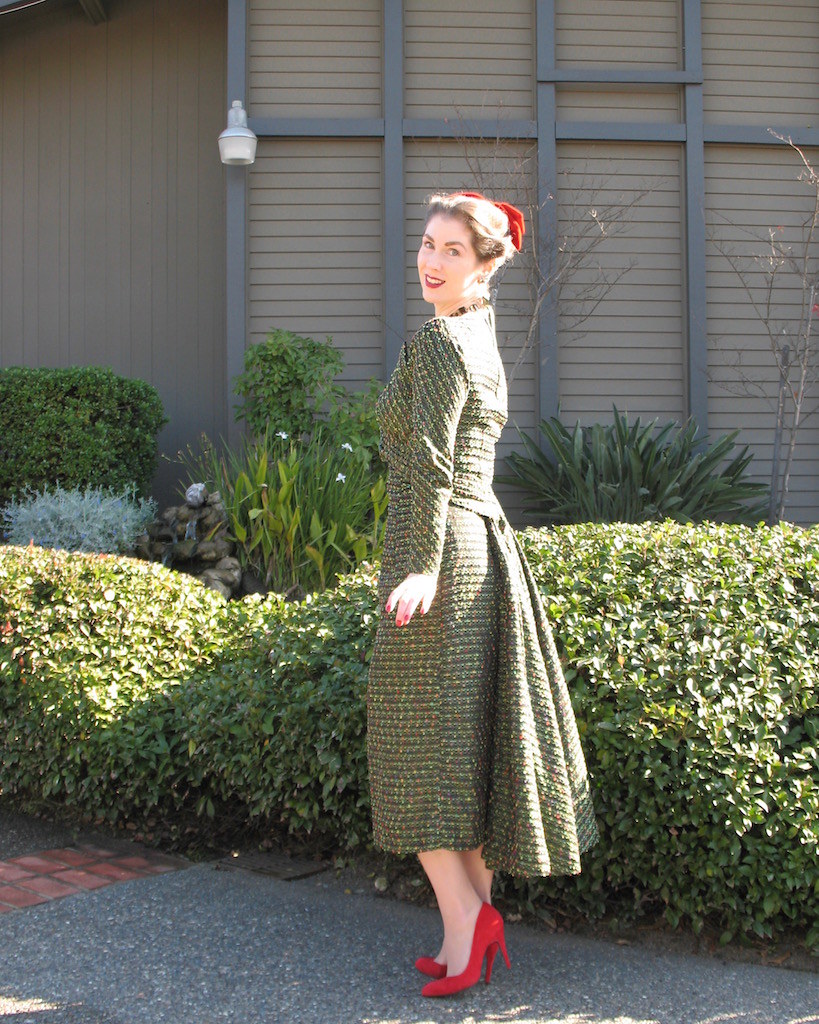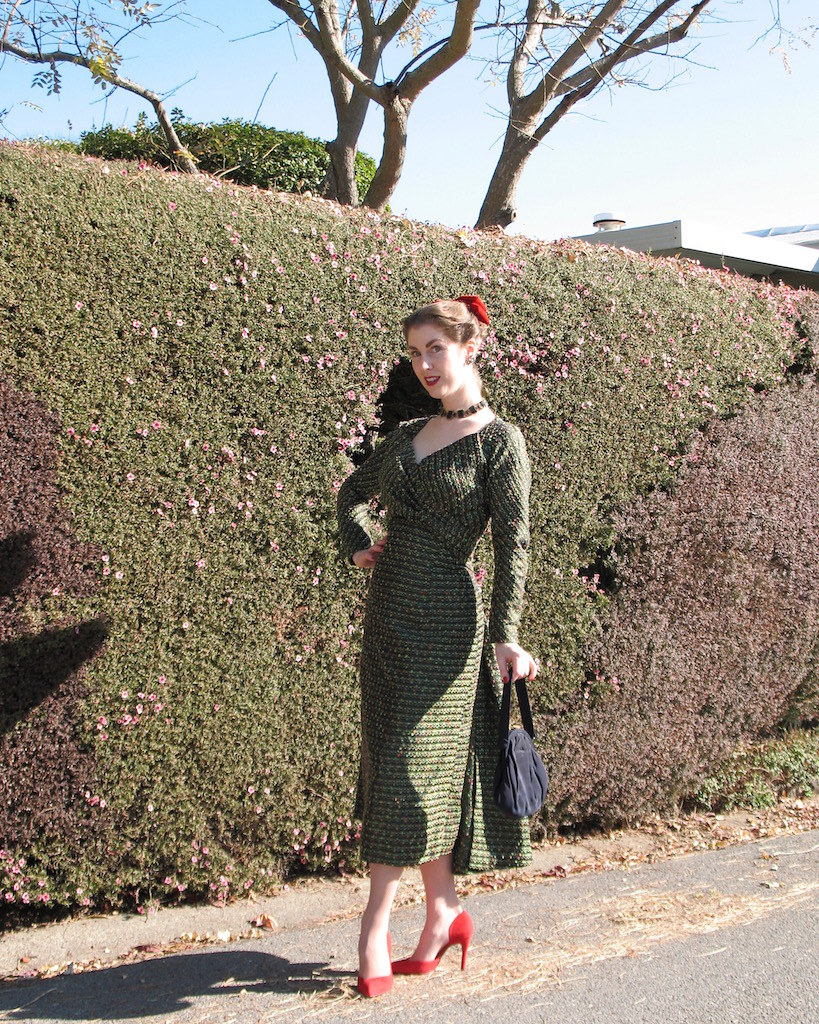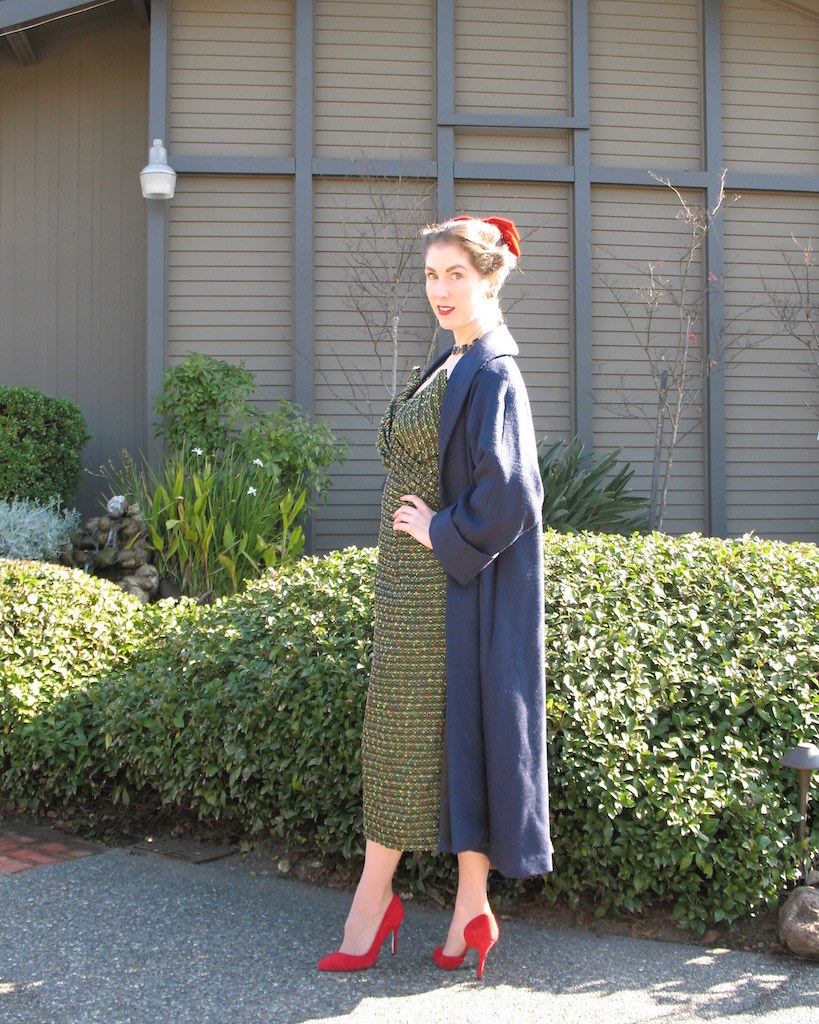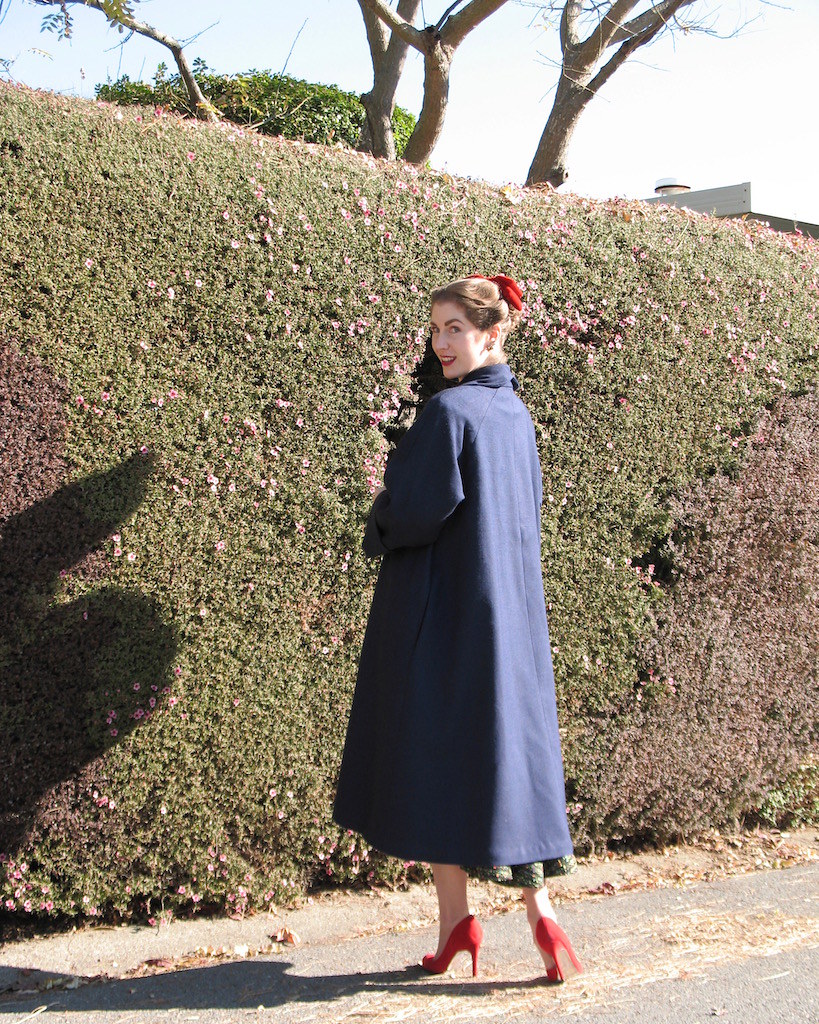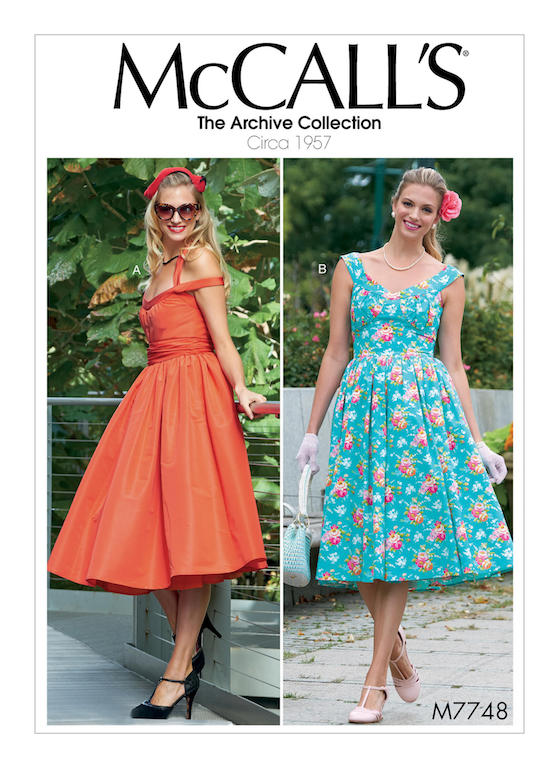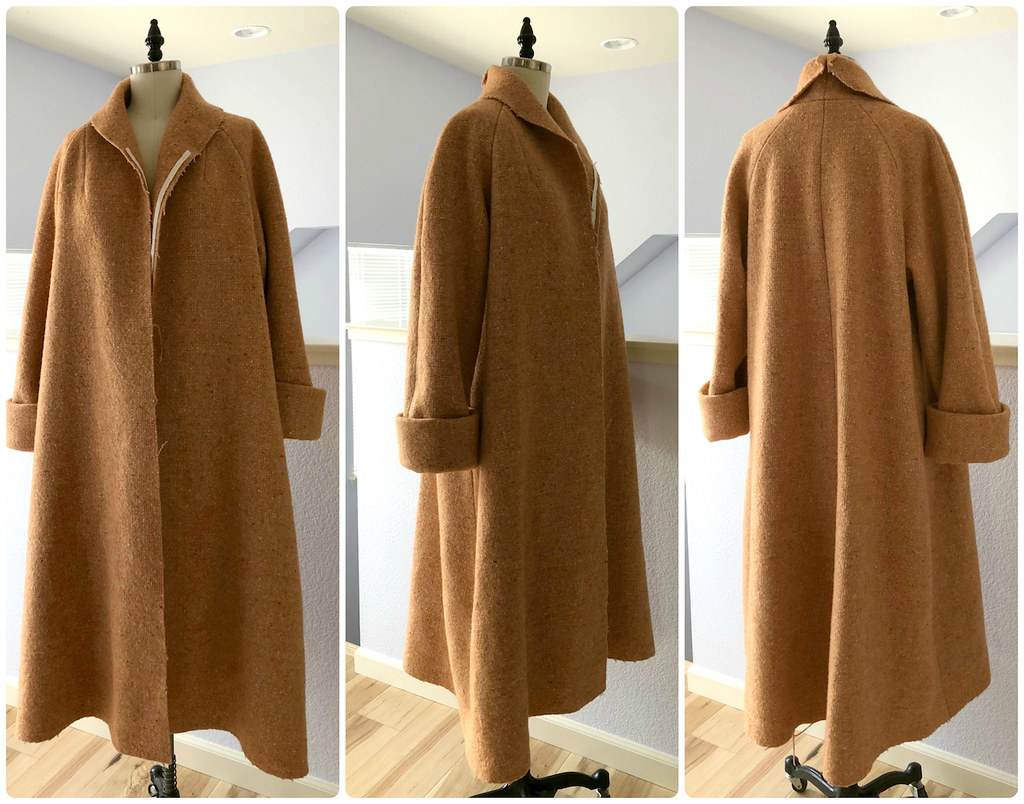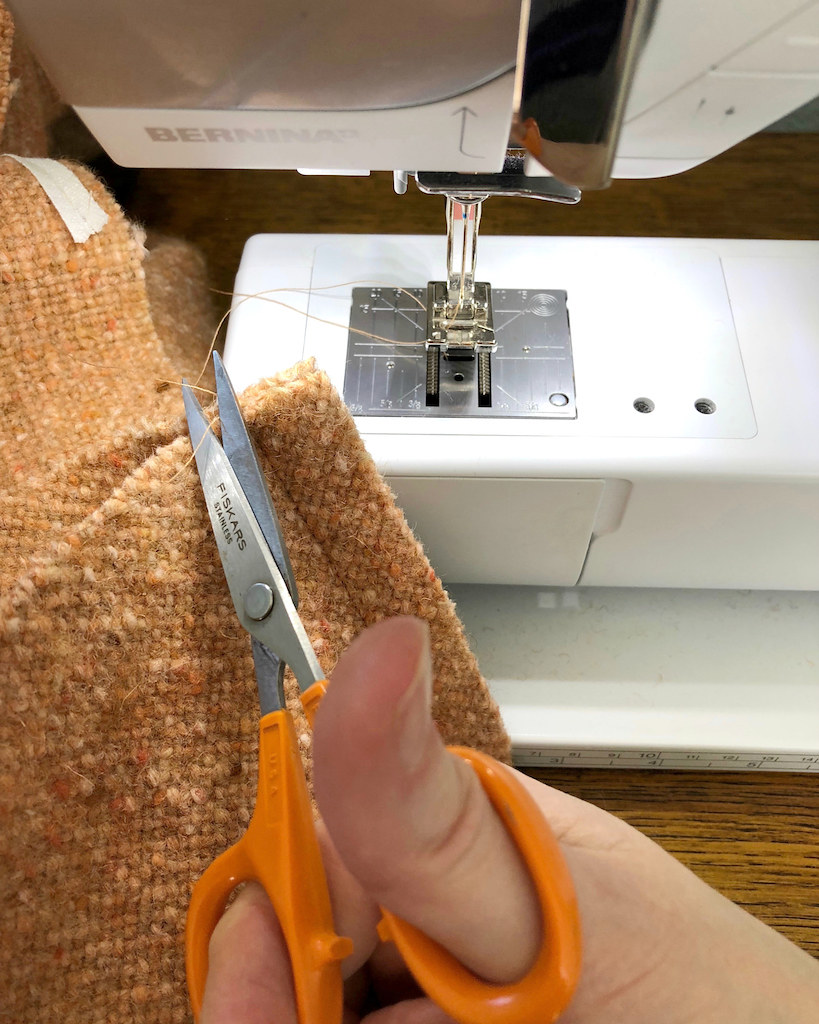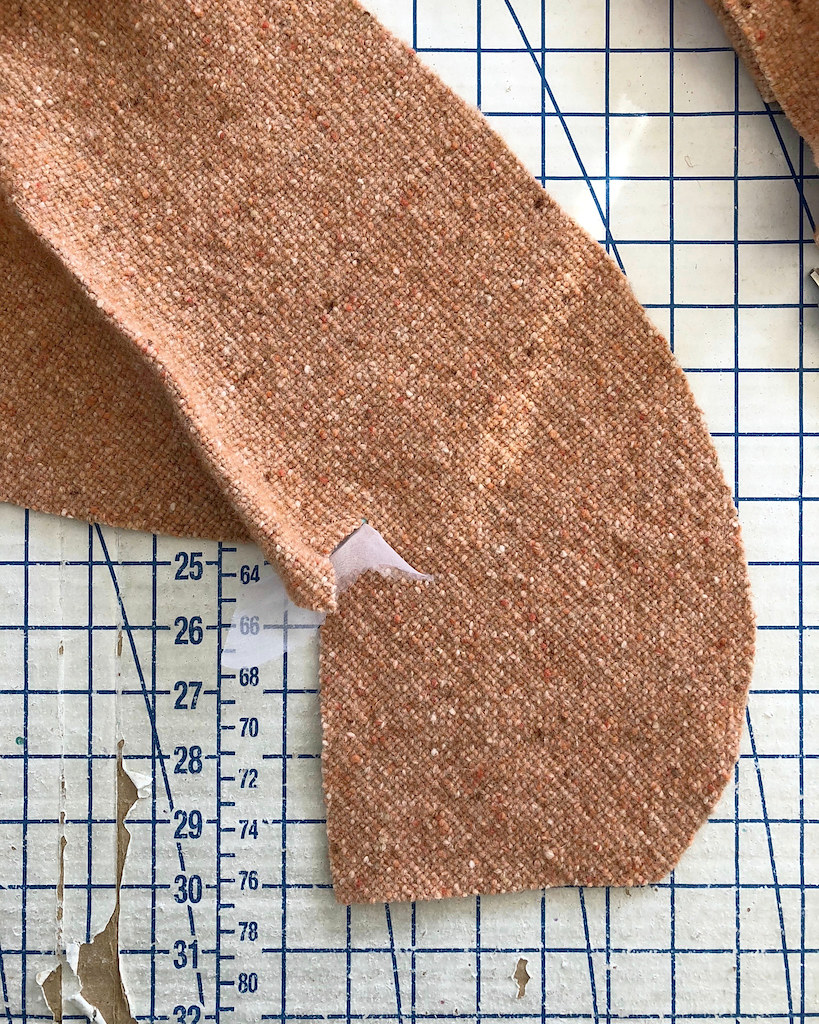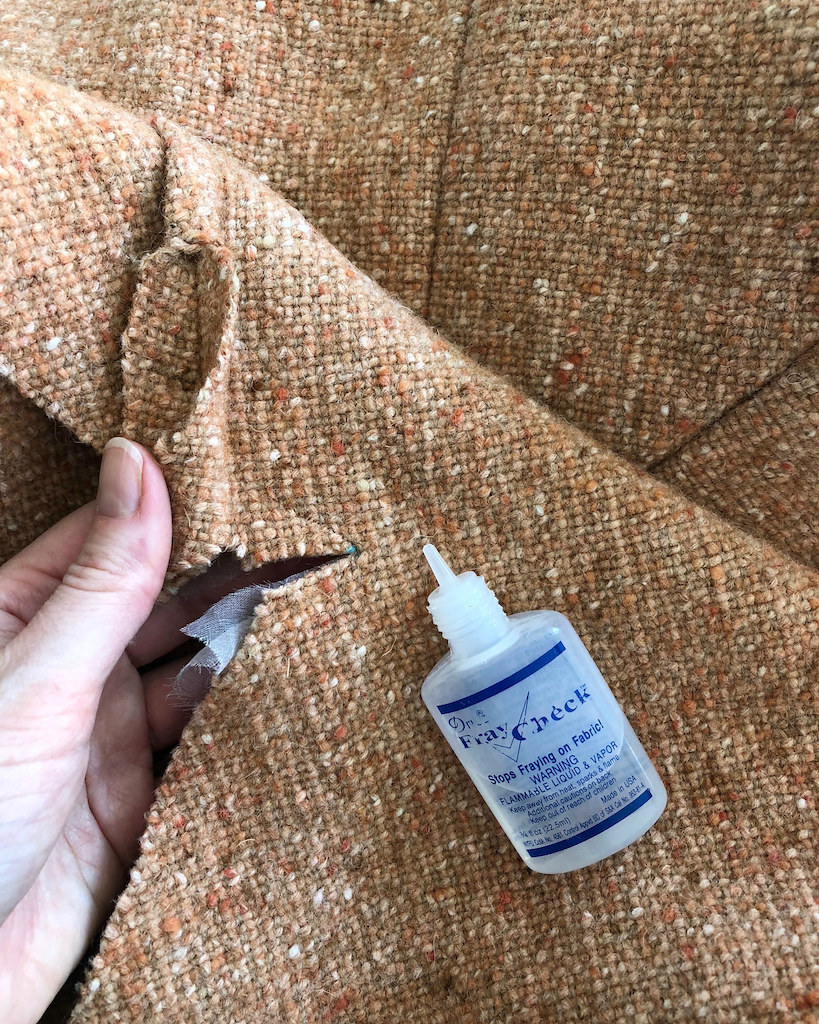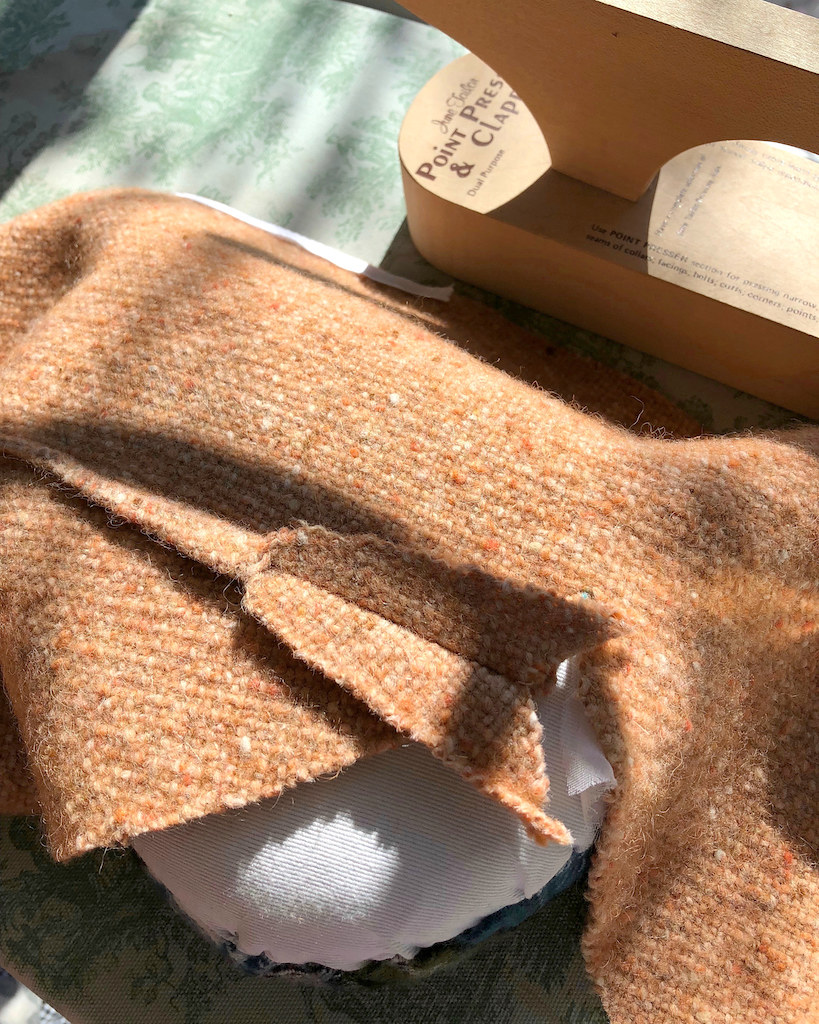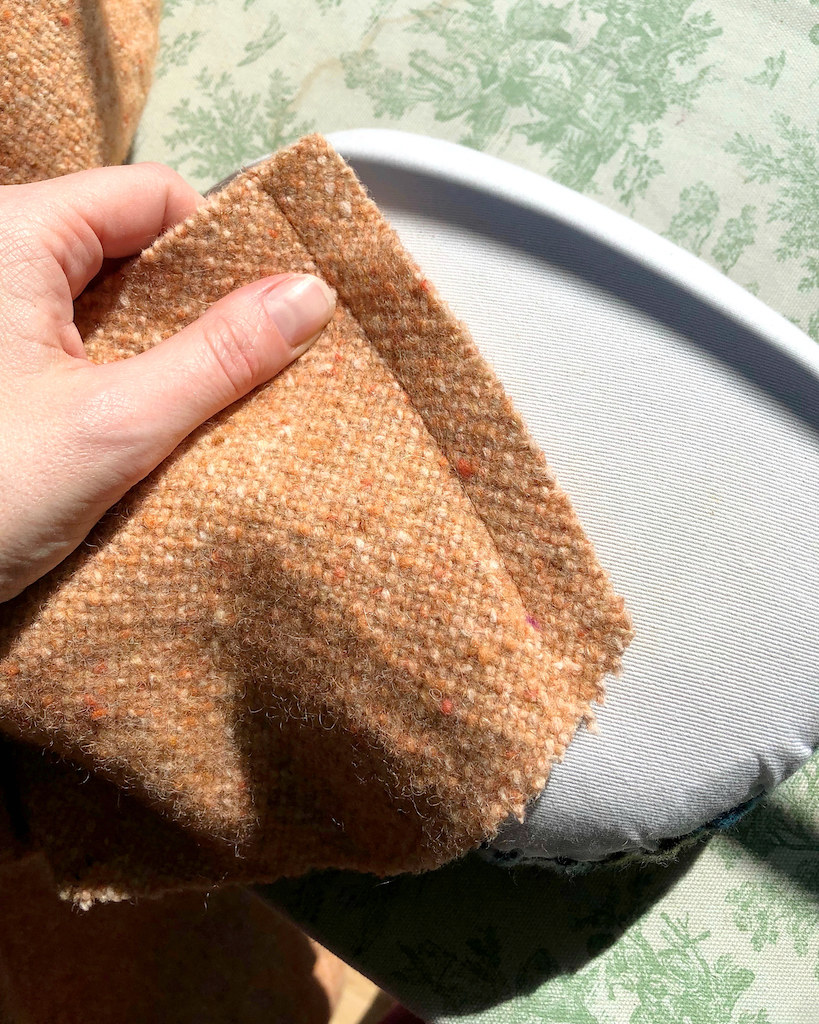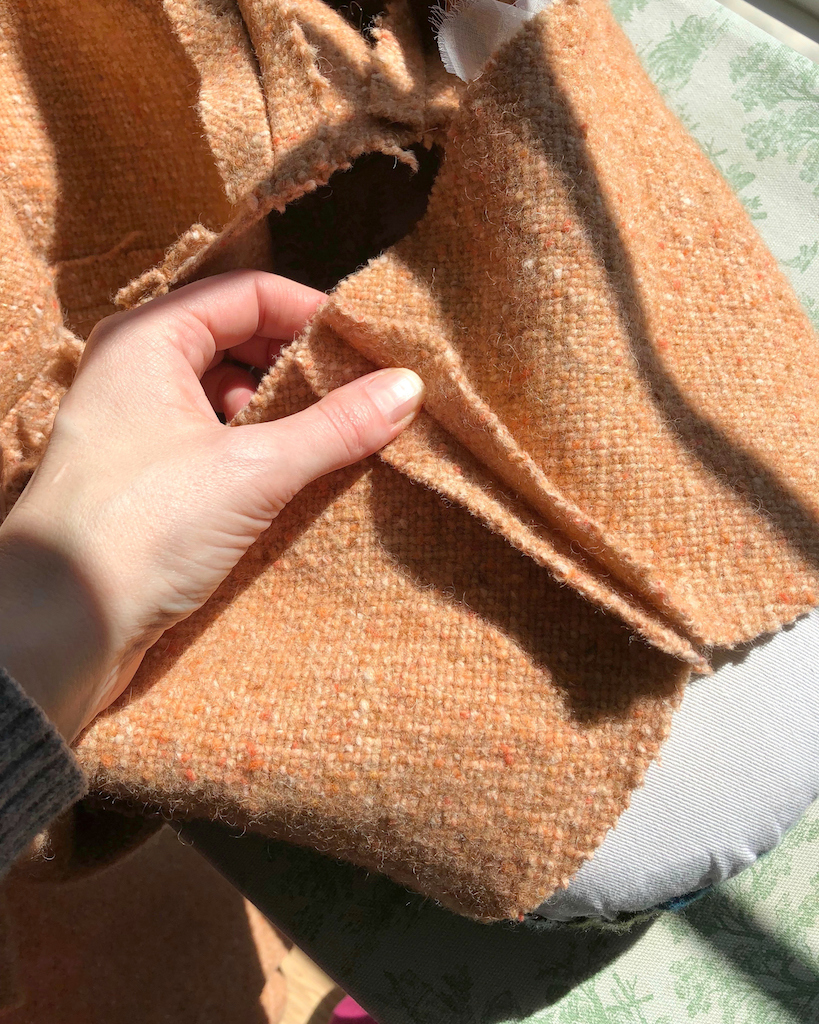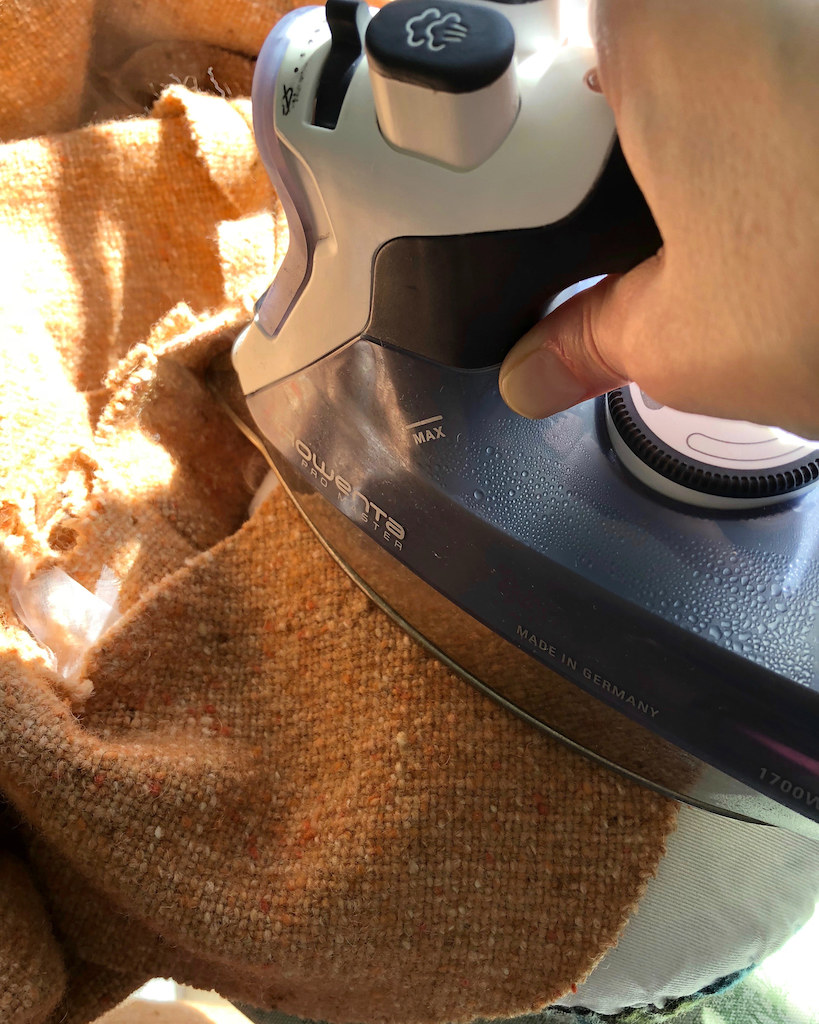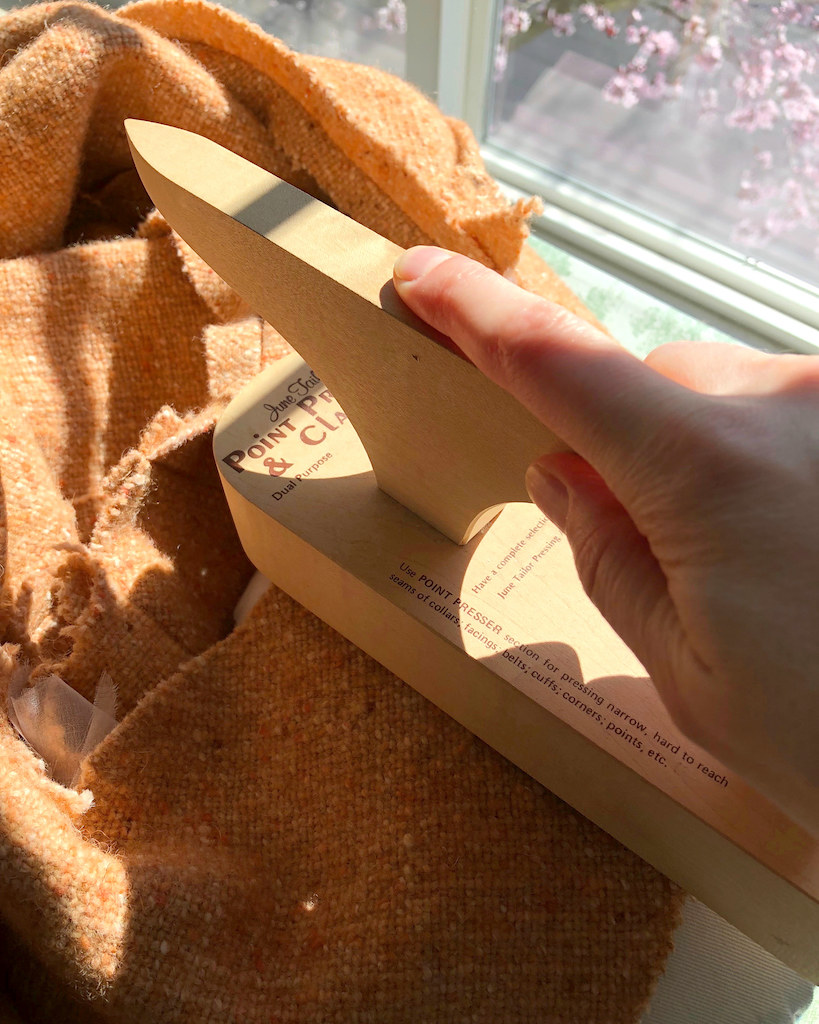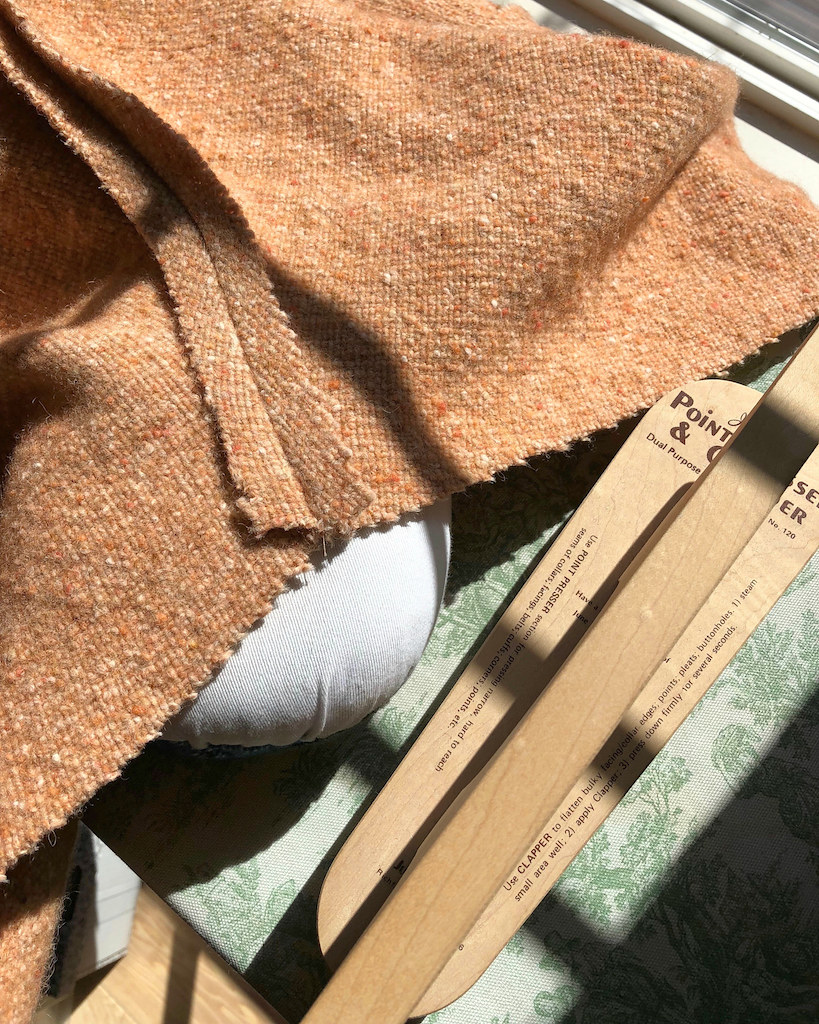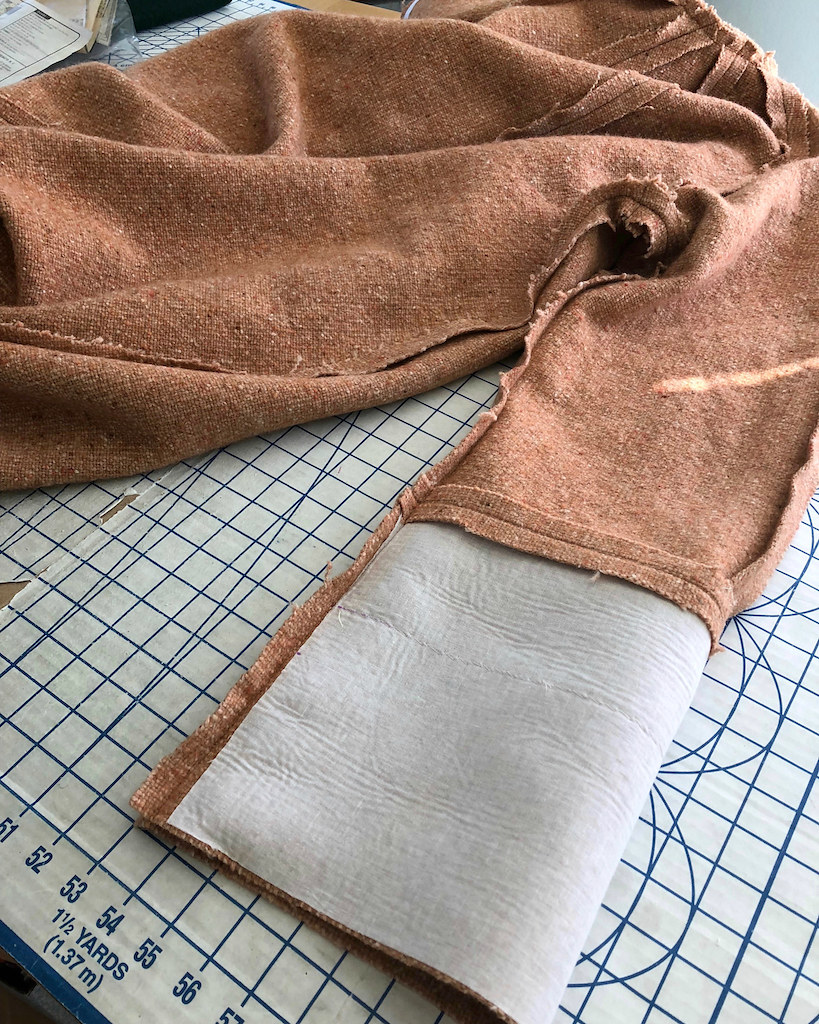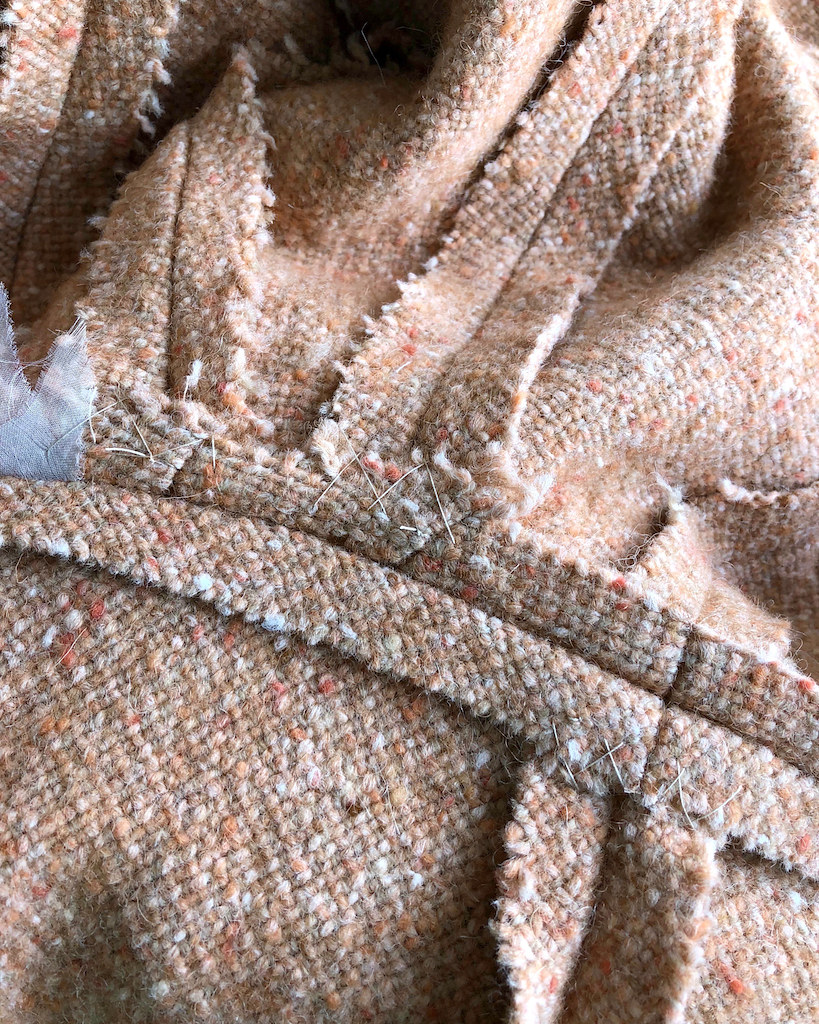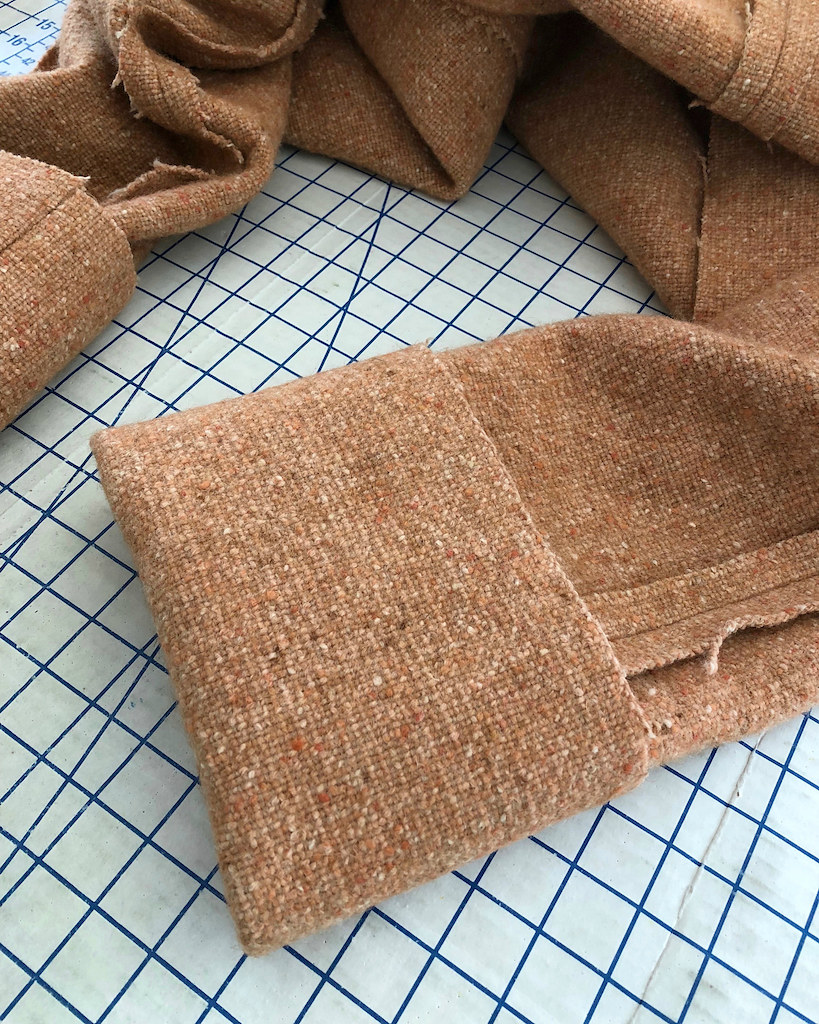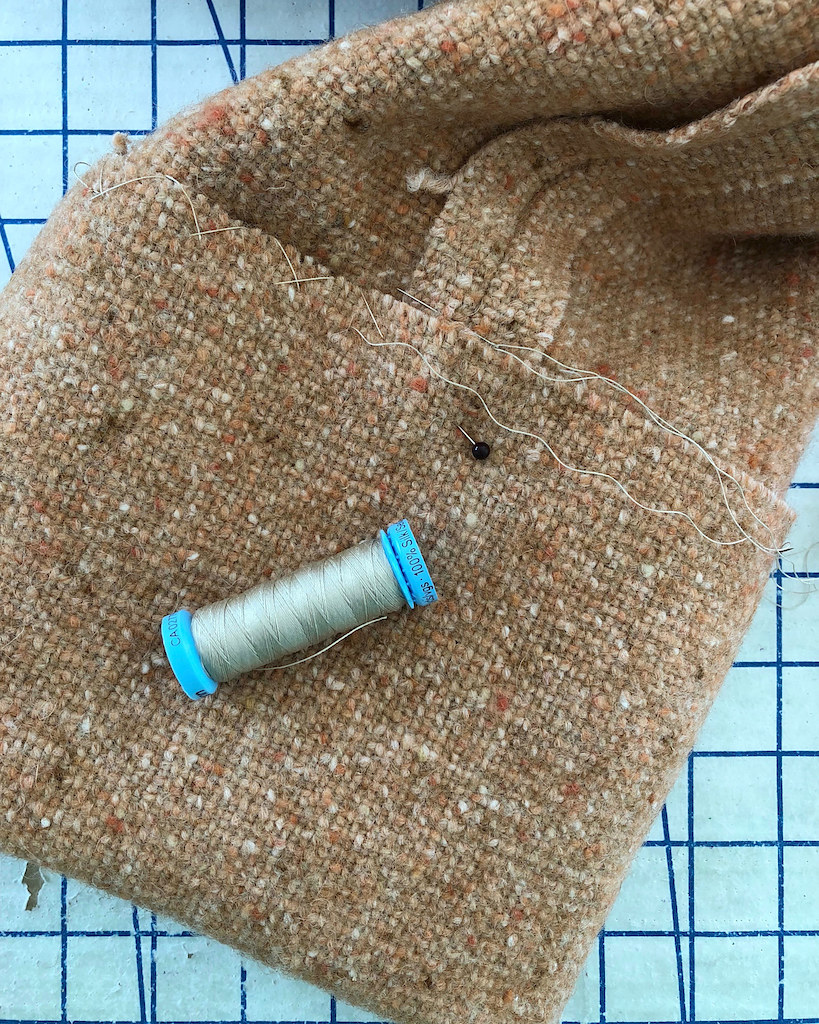Back to my wool coat.
I am trying to be better about trimming stray threads as I go. Now that I am in a new sewing room setup, I believe I am going to have to make myself one of those thread catcher things. Perhaps that will motivate me to keep clipping those threads!
There is one tricky spot on this design that requires clipping to stitch the bodice front dart which happens on the front facing and on the coat front. I used my trusty gusset reinforcement trick and used another scrap of silk organza (I am getting low on my stash - it's amazing how often that stuff comes in handy!).
Because this wool has a very loose weave, I added another layer of protection with a dab of fray check. Miraculously, this fabric does not seem to shred that easily, but I don't want to have an issue with this clip down the line. Someday I will have a project that is suited to arrow tacks, but for now, this is the route I am going.
Because of all the bulk, I also decided to open the top half of the dart and press the heck out of that thing.
The instructions suggest reinforcing the opening edge with a length of twill tape.
I went ahead with it, although I am not sure that this stable fabric really requires that step. But it can't do any harm. The tape will be caught up in the seam that connects the facing to the coat.
Speaking of seams . . .
This is probably the thickest fabric I have every worked with, and it continues to require a lot of time at the ironing board.
Each seam is pressed flat to set the stitches.
Next, it is pressed open.
And then, it is pressed in the open position with added pressure of the clapper. Sometimes I did this more than once.
I can't say enough about this sewing tool. There is no way that any iron would be able to press these thick layers flat without it.
I also added a few more catch-stitches at seam junctures to help keep everything in place.
I have definitely had a workout hauling this thing back and forth between the machine, the table, and the ironing board! But I believe all that extra work will be worth the effort.
I went with a fusible interfacing because a sew-in seemed like the wrong choice.
Unfortunately, the stuff started to bubble as soon as I started moving those pieces around, even though I let those pieces cool completely before moving them during the fusing. Does anyone have suggestions on a good fusible?
But other than that hiccup, everything else went together without much trouble.
I added a bit of width to the cuffs.
The sleeves start to flare out from the hemline, but the cuff pieces are a rectangle. This means that the cuff is smaller than part of the sleeve. It was not such an issue with my drapey blue coat, but I expected it might be with this thick coating.
So far, it seems to be working!






